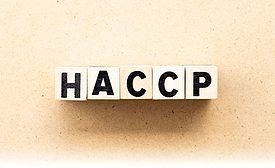Process Control
Many countries are adopting simple, front-of-pack labels to communicate nutrition information to consumers
Read More
Codex Principles of Food Hygiene 3.0
A third revision to Codex’s General Principles of Food Hygiene is in progress.
December 22, 2021
The Regulatory Inspection: A Tremendous Opportunity to Build a Relationship
Tips on keeping the peace yet making your point
October 18, 2021
The Regulation of Chemical Recyclates for Use in Food Packaging
While the need for recycling is important, it shouldn’t compromise food safety
October 18, 2021
Use of Quality Assurance Tools in Food Safety
Deploying data to probe root causes of safety lapses—and prevent them
August 17, 2021
Preventive Maintenance: Another Preventive Control?
Keeping food safe is the ultimate goal
August 17, 2021
Beyond HACCP and Preventive Controls: Promoting True Risk-Based Thinking Tied to Public Health Outcomes
Rethinking preventive approaches to food safety
June 20, 2021
Building a Comprehensive Food Safety Plan
Protecting consumers, preventing brand equity damage, and ensuring regulatory conformance
June 20, 2021
Packaging
The Status of EU Regulations on Food Contact Materials
Member States clarify their own rules for food contact materials as they await harmonization
April 16, 2021
Process Control
Genetically Modified and Irradiated Food: Facts versus Fiction
Proven safe, technologies now must win over a wary public
April 15, 2021
Never miss the latest news and trends driving the food safety industry
eNewsletter | Website | eMagazine
JOIN TODAY!Copyright ©2024. All Rights Reserved BNP Media.
Design, CMS, Hosting & Web Development :: ePublishing









